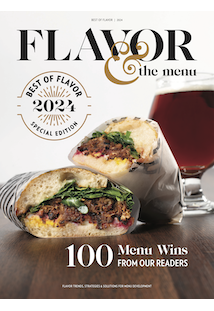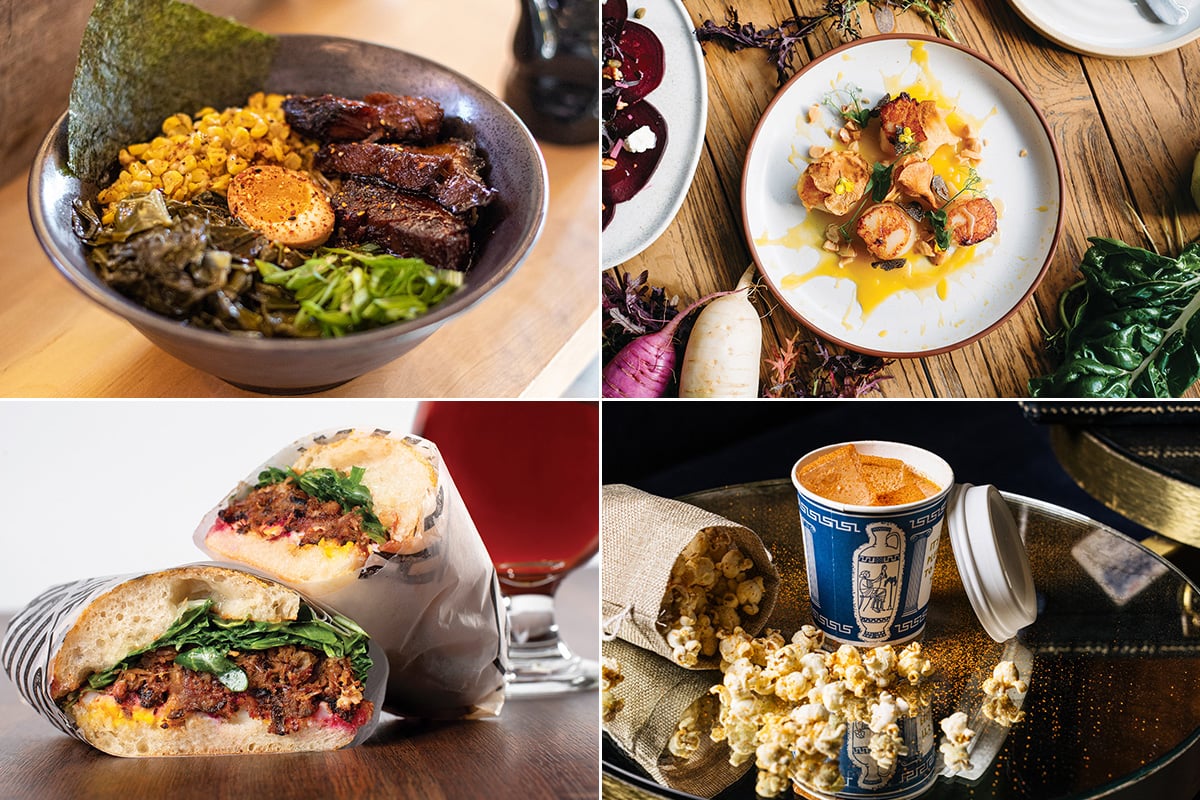
How to Lean Into Japanese Cuisine
Four dishes, four different approaches
How to Lean Into Japanese Cuisine
Four dishes, four different approaches
By Patricia Fitzgerald, Katie Ayoub and Nicole Duncan
October 8, 2024
By Patricia Fitzgerald, Katie Ayoub and Nicole Duncan
October 8, 2024
In bringing global influences to a new dish, it’s easy to assume that taste is the sole means of culinary cross-pollination—but that assumption overlooks several alternative routes. Sometimes, it’s a single starring ingredient that doesn’t dictate the flavor so much as spotlight the unique offerings of its country of origin. In other instances, a classic is made new through a formatting switch. And at times, a single note within a medley of bold flavors is enough to influence the overall build, serving as a sort of representative element in a multicultural mash-up.
These four Best of Flavor entries adopt elements of Japanese cuisine without directly replicating a specific dish. Each result is a fresh creation whose provenance is shared by multiple sources of inspiration and perfected by the chef.
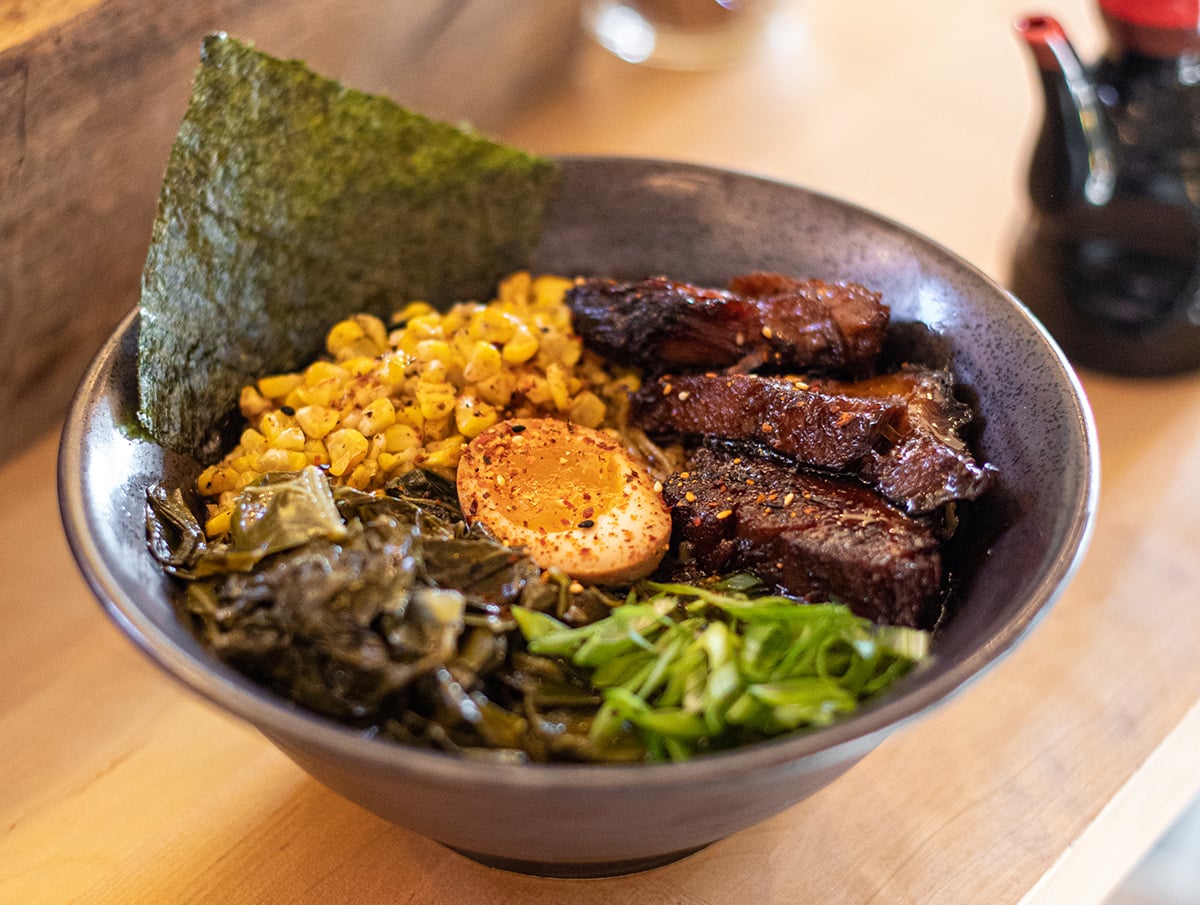 Photo Credit: Nanbu Noodle Bar
Photo Credit: Nanbu Noodle Bar The Nanbu Noodle Bowl marries the best of both worlds with a mix of Southern U.S. and Japanese ingredients.
In the case of Nanbu Noodle Bar, Southern cuisine finds a complementary partner in Japanese flavors and iconic ingredients. Located in the beach town of Santa Rosa Beach in Florida’s panhandle, the restaurant draws visitors from neighboring states who are interested in Southern comfort with a twist, as chef/owner Nikhil Abuvala puts it. This menu approach shines brightly in the eponymous Nanbu Noodle Bowl where Japanese ingredients like ramen, a soy-seasoned egg and Kurobuta pork shoulder are mingled with Southern staples, including collard greens, sweet corn and scallion.
“This is a best seller because of how impactful every individual ingredient is to the bowl’s overall flavor,” Abuvala says. “From the collards to the soy egg to the Kurobuta pork shoulder, we really pulled out all the stops.” The overall effect skews heavily toward Japanese cuisine, both in terms of visuals and flavor, but the addition of key Southern foods solidifies it as a localized dish with global sensibility.
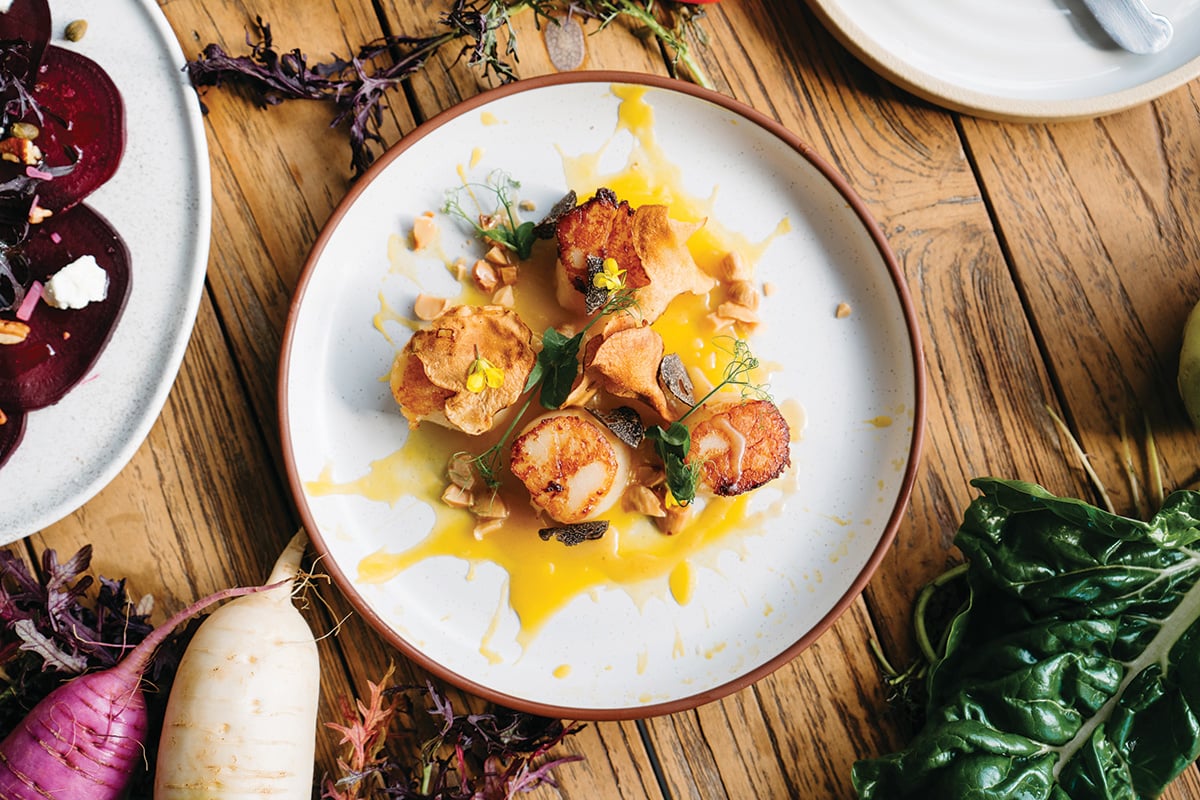 Photo Credit: 1 Hotel Nashville
Photo Credit: 1 Hotel Nashville The flavor profile of the Hokkaido Scallops at 1 Kitchen Nashville is informed by seasonal ingredients, save for the headlining scallops, which are sourced directly from Japan.
A locavore’s dream come true, 1 Kitchen Nashville spotlights the bounty of its surroundings, with some ingredients sourced as closely as the on-site garden. But one of the hotel restaurant’s most popular dishes features a headliner from much farther afield, namely Japan. Hokkaido Scallops boast a sweet, buttery taste that makes them the perfect protein to anchor other farm-fresh flavors. “They are the star of the dish, and I’m just trying to put them on a pedestal,” says Chris Crary, culinary director.
The supporting players are dictated by seasonality and general availability. When the dish first debuted, the scallops were flanked by acorn squash purée, fried Marcona almonds, crispy sunchokes, maple-sherry vinegar and brown butter. This autumn, it features sweet potato purée, pecan gremolata and Nashville hot pork cracklin’. “Each item is used to highlight the flavor of the scallops and also offer contrasts,” Crary says. Throughout these rotations, the scallops remain a constant, bringing a bit of Japan to a hyper-local Tennessee dish.
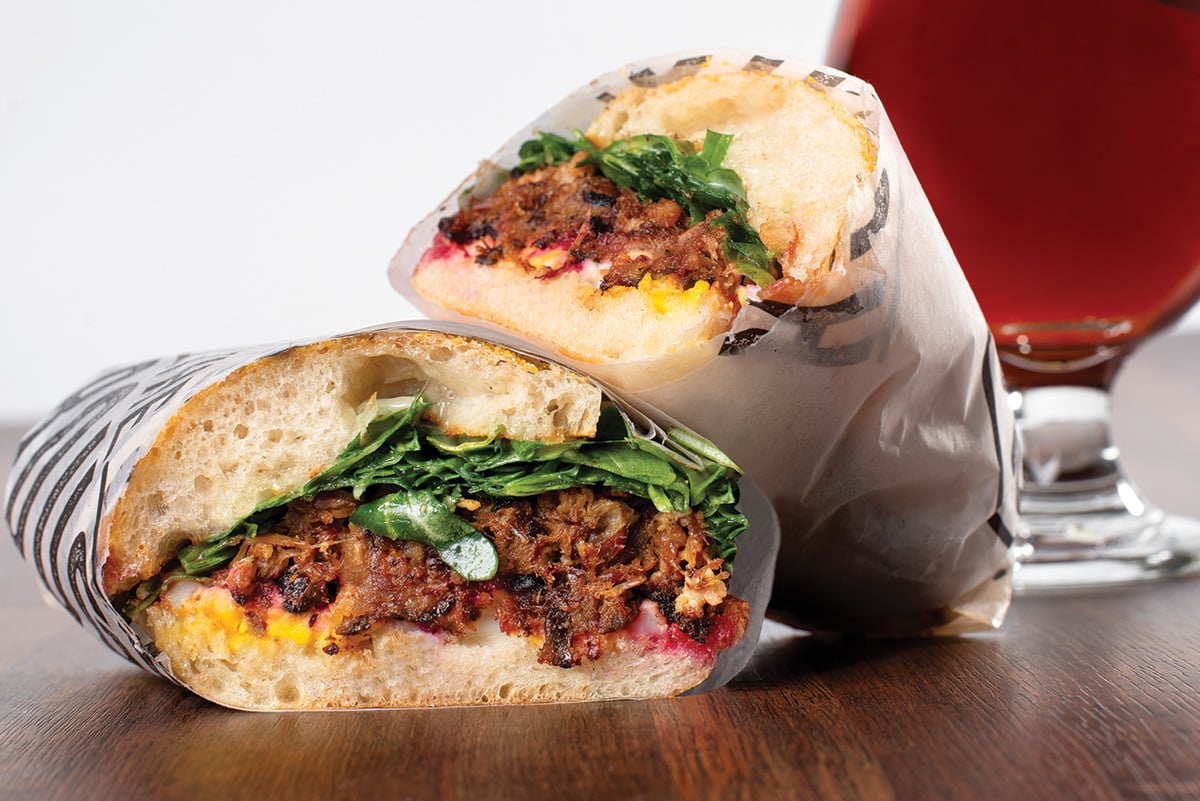 Photo Credit: The Trough Sandwich Kitchen
Photo Credit: The Trough Sandwich Kitchen This Chasu Sandwich boasts many of the same ingredients as a classic bowl of ramen, but they’re tucked into a cornmeal roll for a handheld twist.
Aside from sushi, ramen might be the most recognizable and ubiquitous Japanese dish in the U.S. And in recent years, it’s escaped the confines of styrofoam cups to find itself on a variety of menus, both traditional and trailblazing. The Chasu Sandwich from The Trough Sandwich Kitchen in Orange County, Calif., definitely falls into the latter camp. Described as a “bowl of ramen in sandwich form,” the handheld incorporates flavors, ingredients and cooking methods from cultures across Asia.
Still, the “meat” of the dish skews towards Japan. The build begins with pork belly that’s marinated for 24 hours then slow-braised for six hours. Slices of soy-marinated egg and Japanese-style mayo double down on the Chashu Sandwich’s ramen inspiration, while pickled ginger, rice vinegar and arugula brighten and balance the overall dish. “Alone, each ingredient is delicious, but together they are magic. Every layer of flavor and texture plays an important role in the final product,” says Brandin Duda, regional manager and chef at The Trough Kitchen. “The sum is somehow greater than its parts.”
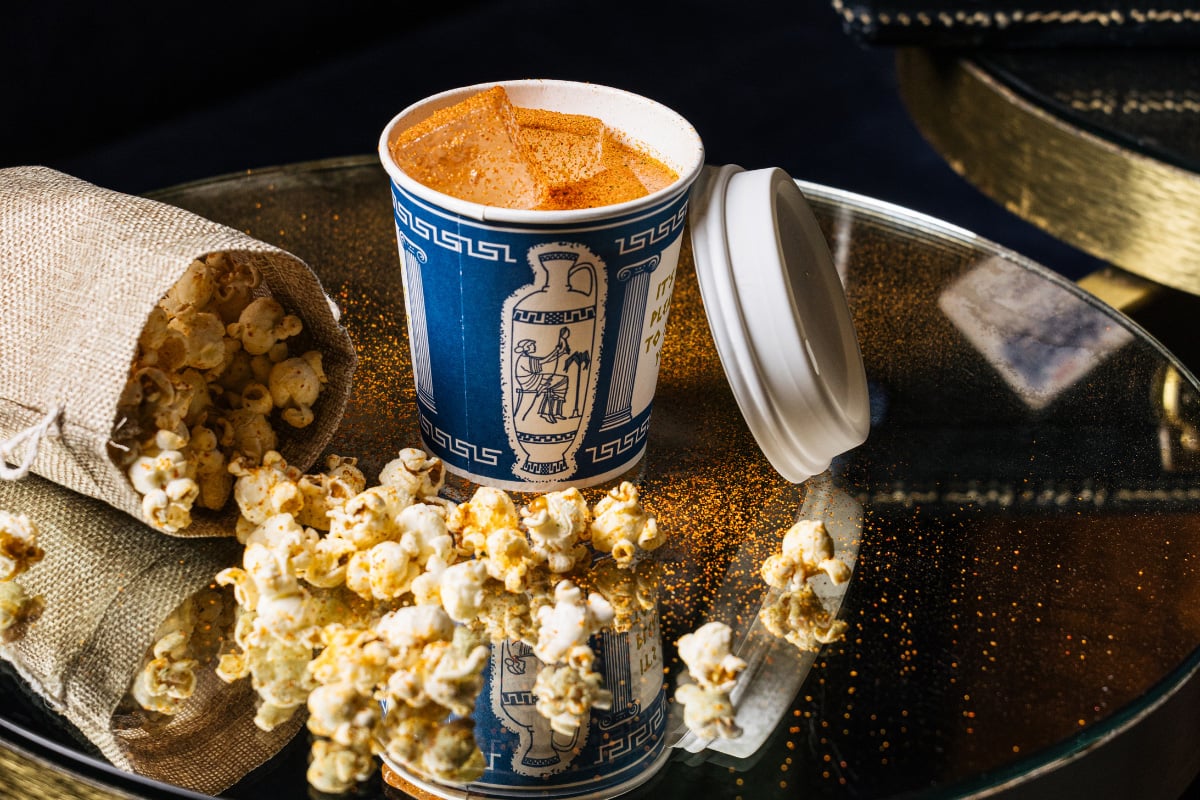 Photo Credit: Grace Stufkosky
Photo Credit: Grace Stufkosky Platform 18’s housemade togarashi spice brings an extra kick of flavor to a popcorn-infused margarita that’s already one-of-a-kind.
Platform 18 in Phoenix goes for cinematic flavor in crafting its Popcorn-Infused Margarita, which, counterintuitive as it may seem, incorporates Japanese flavors—and a bit of theater concessions—into the beloved Mexican cocktail. The global influence comes not through a spirit like whisky or sake but rather an iconic spice blend. Housemade togarashi is paired with butter popcorn-infused tequila and served alongside togarashi-seasoned popcorn. It’s a winning, if not unlikely, flavor combination that works on both the food and beverage sides of the menu. A scratch-made pandan tincture is also applied to the concoction, bringing subtle notes of cereal milk to the already complex profile.
“You’ll taste flavors of a familiar spicy margarita but with a Platform 18 twist,” says Jason Asher, co-founder and VP of beverage of Platform 18. “We crafted all the components of this cocktail with meticulous detail, even serving it in the iconic blue-and-white New York to-go coffee cup.”
Like all world cuisines, Japanese ingredients, flavors and culinary traditions offer a wealth of inspiration. By taking a deeper dive, chefs and menu developers can find ways to put their own spin on a classic dish or incorporate high-impact elements to create something original that celebrates its multicultural roots.

